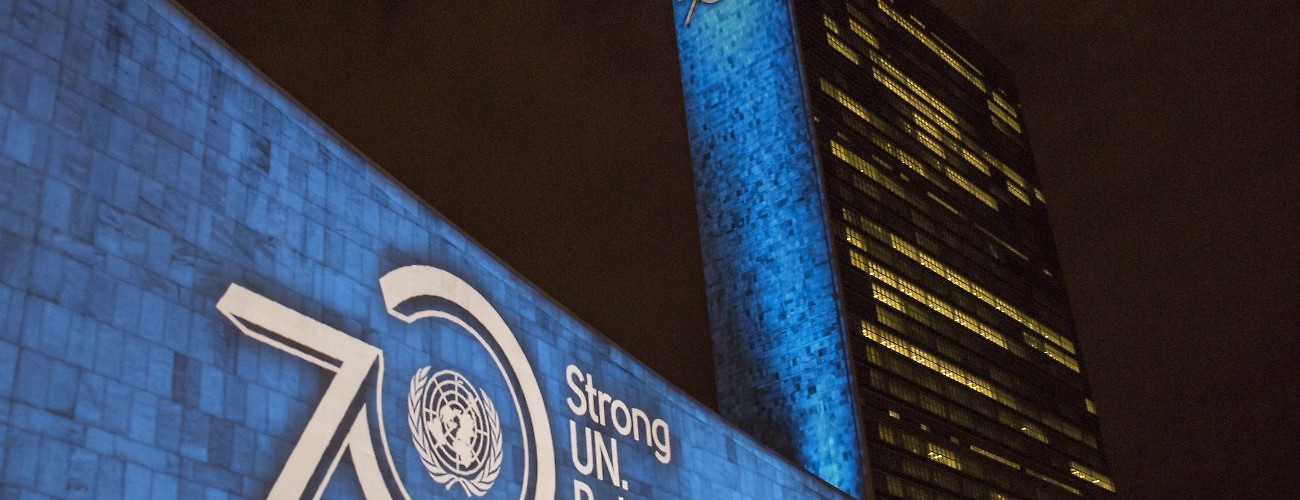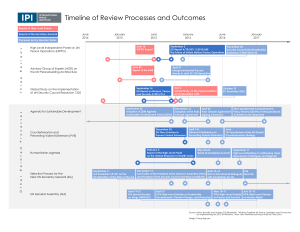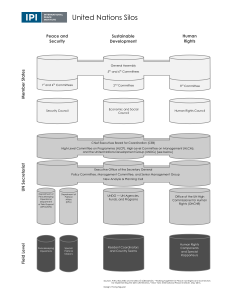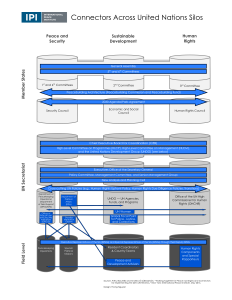In 2015, on the occasion of its seventieth year of existence, the UN undertook a comprehensive assessment of its peace and security work through three reviews on peace operations, peacebuilding, and the implementation of the women, peace, and security agenda. These reviews aimed to strengthen the effectiveness, coherence, and relevance of the UN’s peace and security architecture to make it better “fit for purpose” and able to respond more effectively to today’s complex and interconnected crises.
The latest report by IPI, developed in partnership with the Norwegian Institute of International Affairs and the Dag Hammarskjöld Foundation, aims to help member states and other stakeholders identify and analyze common themes, interlinkages, and synergies emerging from these reviews, particularly in four areas: (1) sustaining peace and prevention; (2) gender equality and women’s participation; (3) collaborative and strategic partnerships; and (4) people-centered approaches.
The report also identifies and analyzes three areas in which the UN should act to operationalize the reviews’ policy recommendations: (1) integration and coherence; (2) financing; and (3) accountability, leadership, and governance. In order to leverage synergies and overcome silos in these areas, the report recommends that the UN:
- Capitalize on existing connectors across its three thematic pillars at the level of member states, the UN Secretariat, and the field, with the peacebuilding architecture serving as a bridge;
- Activate new connectors recommended in the three reviews, including a centralized analysis and planning cell, a single peace operations account, and implementation of the 2030 Agenda; and
- Build on precedents of member states coming together to work across structural divides, as well as the emerging consensus on sustaining peace and on systemic coherence and integration.
This will require the UN to organize and present its work differently in the field and at headquarters, with bold integration within and across relevant UN pillars and entities. It will also require member states to change the way they engage with UN bodies and structures, including through better incentive structures, financial approaches, and instruments, as well as strong and visionary leadership from the next secretary-general.











